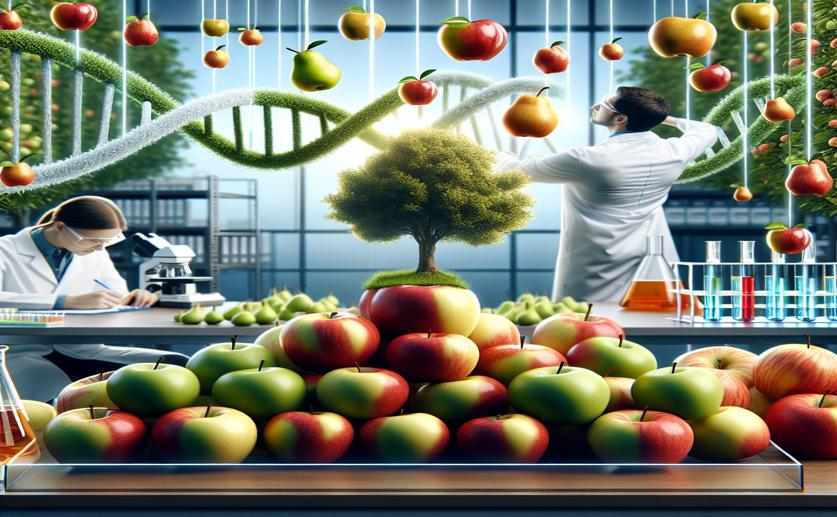
Creating New Apple Varieties by Cross-Breeding with Pear Genes
Jenn Hoskins
5th March, 2024

Image Source: Natural Science News, 2024
Key Findings
- Scientists in Kyoto created new apple-pear hybrid seedlings
- The hybrids show balanced genetic contributions from both apple and pear parents
- This breakthrough could lead to fruit trees with better disease resistance and new flavors
References
Main Study
1) Introduction of a diverse genetic background of Pyrus into Malus through intergeneric hybridization.
Published 2nd March, 2024
https://doi.org/10.1007/s00438-024-02131-8
Related Studies
2) Understanding and overcoming hybrid lethality in seed and seedling stages as barriers to hybridization and gene flow.
3) Molecular characterization of intergeneric hybrids between Malus and Pyrus.
4) Pear genetics: Recent advances, new prospects, and a roadmap for the future.
5) Chromosome-scale genome assembly of Japanese pear (Pyrus pyrifolia) variety 'Nijisseiki'.



 25th January, 2024 | Greg Howard
25th January, 2024 | Greg Howard